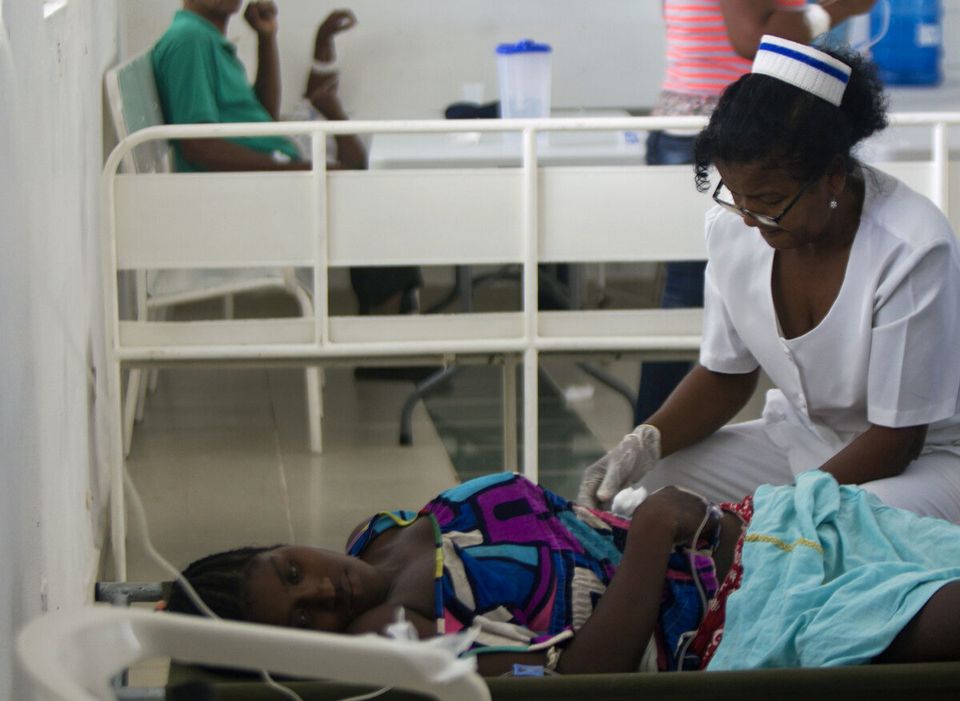
By: Craig and Marc Kielburger
In the fall of 2010, cholera arrived in Haiti like the hydra from Greek mythology. For every patient Dr. Denold Milsoit treated, two more would be carried in. Thousands would succumb to its poisonous bite.
Last December, TIME Magazinebestowed its "Person of the Year" on the healthcare responders fighting Africa's ebola outbreak. It is well-deserved--these people have risked their own lives to fight a horrific disease. We feel there is similar group deserving of recognition--those in Haiti like Dr. Milsoit battling what the U.S. Center for Disease Control calls "the worst cholera outbreak in recent history."
Since the epidemic began in October 2010, more than 700,000 Haitians have contracted cholera. Of these, 8,500 have died. By comparison, Ebola has now claimed 6,900 lives in West Africa.
Cholera is a bacterial disease that is most commonly spread through water or food that has been contaminated by an infected person. It's often found wherever disasters or conflicts disrupt sewage systems and clean water sources.
A person with cholera experiences severe diarrhea. For Canadians, diarrhea is at worst an inconvenience. In a developing community, the dehydration it causes can be a death sentence. Cholera kills more than 100,000 people around the world every year.
Today, Milsoit is an energetic, young general practitioner in Haiti--the family doctor to some of our team in that country. But when the epidemic struck he was working on the front lines in hospitals, treating patients. He told us that he and the other doctors and nurses were completely unprepared for the outbreak. Haiti had not experienced cholera in over a century. "It was the first time that our generation had to face cholera."
The contamination began in the Artibonite River, a major waterway that runs through multiple communities in central and northern Haiti. It's never been proven how the bacteria got there, although many blame poor sanitation on a United Nations base housing peacekeeping troops along the river. "Right from the beginning, the victims were not in the dozens but in the hundreds," Milsoit recalls.
Haiti's water and sanitation systems were still shattered from the earthquake when the outbreak hit. Raw sewage ran in the streets of the country's capital, Port-au-Prince. Millions of Haitians were still crammed into overcrowded refugee camps, sharing a limited number of communal toilets. Conditions were ideal for the spread of cholera.
In November 2010, Hurricane Tomas struck Haiti. The flooding it caused further abetted cholera's spread.
Many Haitian hospitals still had unrepaired damage from the earthquake, and had not yet replaced staff killed in the disaster. They were ill-equipped to handle the massive influx of patients. With no protocols for handling the disease, and exhausted from working non-stop 14-hour days, Milsoit says many doctors and nurses began to fall ill.
Milsoit told us that, on average, every hospital lost five patients a day during the first weeks of the outbreak. Many more never made it to a hospital.
Haitian healthcare professionals and international organizations worked quickly to establish treatment centres across the affected areas of Haiti. Sanitary toilet facilities were expanded in camps for displaced people. A national awareness campaign was launched to raise awareness of simple precautions that prevent the spread of the disease, like regular hand washing and proper disposal of waste.
The severity of the epidemic has diminished significantly. The average death rate from the disease has fallen significantly from 62 people a week in 2011 to just one per week by the summer of 2014.
But cholera is far from being eradicated. "Each time a new rainy season comes there is a fresh outbreak of the disease," Milsoit laments.
You will likely never see Milsoit's face on the cover of a magazine. But on the fifth anniversary of the Haiti earthquake, we believe some recognition and thanks are owed to him--and to all of those--who have spent so many years fighting a forgotten epidemic. They are true heroes.
Brothers Craig and Marc Kielburger founded a platform for social change that includes the international charity, Free The Children, the social enterprise, Me to We, and the youth empowerment movement, We Day.
MORE ON HUFFPOST:
